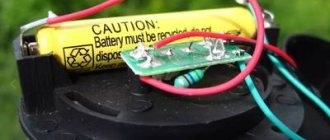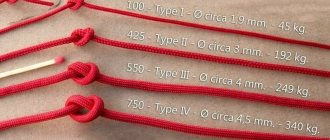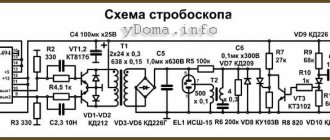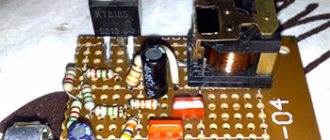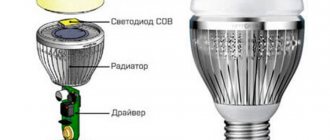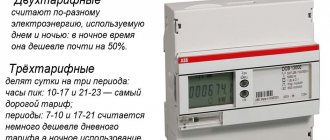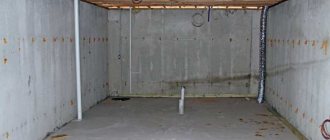A simple device allows you to create light illumination even where there is no electricity.
A garden lantern can be used individually or as a whole complex to organize decorative lighting for plants and stones. You can make a glowing solar-powered flashlight on your own.
Let's look at possible schemes for creating a decorative lighting fixture for a garden plot.
Wiring diagram of a garden lamp
The operating principle of a solar lantern is very simple, regardless of the size of the device. For its operation, you will need a panel that will collect the sun's rays, a storage battery, a voltage converter, and a luminous element capable of receiving energy.
The elements are arranged in a chain that will work with the correct selection of LEDs and other parts.
Electronic circuit diagram for assembling an LED flashlight:
Transistor solar panel
Just like diodes, the open semiconductor crystal of a transistor, when illuminated, forms a potential difference across the pn junctions. If you take measurements, the result will be that there is always a pair of contacts that produces the maximum possible power.
But before this you need to “open” the transistor housing - carefully remove the cover. This is what the 2T908A transistor looks like “inside”:
Typically, the highest EMF occurs between the collector and base or the emitter and base. Before assembling a home solar panel, you need to test all prepared elements and sort them into groups (blocks) with the closest total voltage values.
Note: One of the main disadvantages of domestically produced power transistors is the “instability” of their characteristics.
For example, in order to select approximately the same pair for a two-stage amplifier, it was necessary to “ring” several transistors manually.
To increase the total voltage and current, a mixed connection is used.
Solar battery elements assembly diagram
First option. Groups (blocks) with the same total voltage of series-assembled elements are connected in parallel, and the sum of currents from each block is obtained at the output. The diagram is shown below:
Second option. Elements with approximately the same voltages are connected in parallel in a group (the output current will be equal to the sum of the currents). And to increase the voltage, several such groups are connected in series.
Compared to a diode solar panel, the assembled transistor unit will occupy a larger area with the same power.
How does a garden lamp work?
The absence of a power connection makes the LED flashlight a very convenient and cost-effective way of lighting. During the day, while the sun is shining, the flashlight stores solar energy in its battery.
The weather must be cloudless and clear to collect light as efficiently as possible. Some flashlights have a controller inside that turns on the light as soon as it gets dark enough outside. Then the accumulated energy in the batteries begins to be consumed.
When completely discharged, the lamp stops producing light. The work looks like this :
- During the day, the storage panel converts the sun's energy into low-power electricity.
- The resulting energy is redirected to the battery using a diode.
- The positive potential through a resistor controls the absence of glow before dark.
- As soon as dusk or another type of dimming sets in, the transistor turns on (the effect is obtained due to a small positive potential in contact with the base) and starts the LED to glow based on the energy contained in the battery. The flashlight emits light.
- The light diode evenly doses the energy production from the battery to prevent complete discharge.
- As soon as it starts to brighten, the positive voltage cuts off the transistor, as a result of which the LED stops receiving energy to glow. During this period, the battery charging process starts again.
Simpler models without a controller accumulate energy and spend it evenly, providing glow at any time of the day.
Selection of parts for manufacturing
Most solar lanterns are created with solar panels that do not exceed 9 sq. cm in area. To make a lighting device with your own hands without using electricity, you will need electrical elements with the following characteristics :
- diodes from 1 to 1.5 volts;
- batteries with a storage volume of 3000 mA and a generated voltage of 3.6 volts;
- solar panels with a total area of 60x60x4 mm, which are distinguished by the production of 4.4 volts with 90 mA;
- for control you will need 4 MLT 20 kOhm resistors;
- transistors KT503;
- glass element as a lampshade;
- PVC base.
All the elements described above will be located on one board, which you can solder yourself. To simplify the process, you can find universal boards in radio stores that will allow you to quickly start working on an LED flashlight.
To create a circuit, you need to stock up on stranded copper wire, which will allow you to draw electrical paths.
A maximum of 4 flashlights can be included in one circuit. With proper assembly, this lamp will work much longer than the purchased one.
To assemble an LED flashlight, you will need not only to select suitable materials, but also to take care of the tools :
- drill;
- stationery knife;
- soldering iron with solder;
- pencil.
Step-by-step instructions for creation and assembly
The first thing to choose is a beautiful lampshade. You can make it from a coffee can, bottle, shot glass or any other glass form. It is best to select a small container that will allow the light to spread as much as possible around the perimeter of the area.
You will have to work according to the following plan:
A hole is made in the bottom of the glass container with a drill.
The procedure should be carried out after the glass has cooled to avoid injury. Hold glass containers with gloves and do not press too hard to prevent the glass from breaking.- A base is created that is suitable in size for the neck of the glass container. You can cut it out of PVC yourself using a stationery knife, or at an advertising agency (thanks to the latter option, it will be perfectly smooth).
- A furniture nut or any other bolt is installed into the base using a soldering iron.
- a circuit is assembled to which all the necessary elements are soldered.
- The PVC base is degreased using an alcohol solution or solvent. The coating substance should not touch the electrical parts of the solar cell, otherwise it will not work.
- The solar battery is attached to the PVC base using super glue, you can use the moment.
- Excess glue is removed with a clean napkin.
- Use a drill to make holes in the bottom for the wires.
- We pass them through and seal them.
- We take a PVC tube with a diameter of up to 5 mm and cut it to fit the base for the diode.
- On a PVC base in the center of the future flashlight we place LEDs in a tube.
- We solder the LEDs together with the wires and protect them with a special varnish.
- We connect the lampshade and the base with the working elements.
- Additionally, we protect the board from scratches with varnish or other transparent compound.
When connecting the PVC base and the glass bulb, you should use sealant or glue to prevent moisture from passing through it. As a result of this simple action, it will be possible to increase the service life of wires and other elements.
For flashlights, you can use stands of any diameter and size. They are created from PVC pipes and then painted in the desired color. You can make a low lantern near the ground, or organize a tall lamp, which will serve not only as a lighting device, but also as a beacon.
Bugs and difficulties
When creating an LED lamp, many people make the simplest and most common mistake - they solder the circuit elements in the wrong sequence. You can avoid it if you strictly follow the electronic diagram and do not deviate from the step-by-step plan for creating a flashlight.
Difficulties may arise at the stage of sealing and degreasing. All procedures must be carried out carefully so that individual elements of the circuit are not damaged.
The following substances should be handled with care:
- solvent and degreaser;
- Super glue;
- solder for soldering iron.
All work must be carried out wearing a mask and gloves to avoid damaging your eyes and hands. For the first time, creating a lampshade from a glass container may not work out, so it is better to prepare two containers at once. One will serve as a prototype, and the second will be used for the lamp itself.
Solar panel made of diodes
To make a panel, you can use diodes in metal and glass cases. The first option is more powerful, but more labor-intensive. The second is simpler, although more elements will be needed to achieve the same power.
Panel of diodes in a metal case
Diodes KD203
If we talk about the maximum power that can be obtained from one semiconductor crystal, then the best in this regard will be the diodes of the KD203 (KD2010) series.
In bright sunlight, one crystal is capable of delivering a voltage of about 0.7 V at a current of up to 7 mA.
But the difficulty lies in the fact that the diodes of this series are manufactured in a metal-ceramic housing, which at the same time acts as a heat sink when mounted on a metal chassis.
To remove a silicon semiconductor crystal and “open” it for illumination, you need to:
- carefully break the ceramics and release the upper contact;
- open the case by removing the “cover” from the base;
- heat the diode to the melting temperature of the tin with which the contacts are soldered to the crystal;
- release the crystal from the upper rigid contact, and solder a flexible conductor instead.
Medium power diodes in a metal or metal-glass case of the D7, D214, D215, D226, D237, D242-D247 series are easier to disassemble. First, the hard contact and part of the housing in the form of a tube from the anode side are cut off with side cutters. And then inserting a knife into the seam between the base and the lid, open the case. To facilitate the process, you can first lightly compress the housing flange in a vice so that the gap between the base and the cover opens.
And this procedure must be performed with each diode, and there should be several dozen of them. In real conditions, the voltage on one crystal will be one and a half times lower than the maximum - about 0.5 V. To get an output of 5 V, you need to connect 10 crystals in series into a block.
Approximately the same ratio of maximum and actual current strength - you need to count on a value of 4-5 mA. To “increase” the current strength and increase the power of the solar battery, you need to connect several such blocks in parallel on the panel.
The panel itself should look like a lattice of cells of two different diameters arranged in several rows, arranged alternately. The large hole is for mounting the housing, the smaller one is for a flexible conductor that connects adjacent diodes into a circuit. This blank for diodes in a metal case without a cover looks like this:
Other panel design options are possible, but the principle is the same - series-parallel connection of elements. The principle of how to make a solar battery from diodes was described back in Soviet times. Below is a photo of an illustration from those times, which shows methods of disassembling elements and a basic connection diagram:
Panel of diodes in glass cases
These elements are less powerful and are capable of “generating” currents of less than one milliampere, but their advantage is that the semiconductor crystal does not need to be “opened”.
For some series, the body is initially transparent, but for those elements whose bodies are painted, you simply need to wash off the paint with a solvent.
These include D223B diodes, which, with optimal orientation relative to the bright sun, are capable of delivering a voltage of about 0.3 V, which is almost comparable to more powerful analogues.
The step-by-step process for making a solar panel looks like this:
- place the diodes in a container with a solvent for some time;
- remove the elements from the solvent and remove the softened paint from them;
- bend the anode leads 180° (this is necessary for the correct position of the semiconductor crystal relative to the plane of the circuit board;
- elements are mounted on the circuit board, combining them into series-parallel groups according to the connection diagram.
This is what a panel looks like, consisting of 9 parallel-connected blocks of 12 elements each:
As you can see, placed in the sun, it produces a voltage of 2.5 V, and its power is enough to fully charge a 0.47 F capacitor in 2 hours.
Pros and cons of a homemade device
In country houses there are often interruptions in electricity, or it is completely absent. The desire to make a lighting design for a garden plot can have great difficulties when laying wires. DIY LED flashlights will help solve the problem.
Their creation and use is associated with the following advantages :
can be made from inexpensive scrap materials;- do not require professional skills during assembly;
- easy to install and dismantle as needed;
- does not require any energy source other than natural light;
- does not involve expenses during operation;
- environmental friendliness of the device.
Despite the visible advantages, a homemade LED flashlight also has some disadvantages :
- In order for the flashlight to work, you will have to work on quality connections;
- if you install it in a dark place, the batteries will not be replenished and the LED will light up;
- when working on a lamp you will need to use tools that not everyone knows how to use;
- you will need to purchase some parts for the circuit board and organizing the parts of the lamp, which contributes to costs;
- cannot be repaired if broken.
conclusions
Of course, everyone decides for themselves, depending on their employment and financial situation, what to do - buy such a lamp or make it with their own hands. But it’s not even about the amount spent on new flashlights, although here the savings come out to be more than 4 times.
Isn’t it nice to know that there is a lamp working on the site of a house or apartment that was created not in a factory, but with your own hands, as they say, “on the knee”? This is probably the main reason why you should try to assemble a solar-powered garden lamp yourself.
Approximate expenses
The cost estimate for creating a garden solar lantern is difficult to estimate due to the difference in design elements. If you use available materials, the costs will be small. To purchase a board and other radio components you will need no more than 500 rubles.
The most expensive part will be the solar panel . Its cost can start from 10 rubles to 1000 rubles, depending on the quality of the product and the brand. The most expensive elements will last a long time and delight the owner of the site with bright light.
Cheap boards break quickly and may not work immediately after manufacture. Additional costs may include PVC pipes. The best option is to find an alternative to them, or use existing supplies.
The expense table might look like this:
| Details | Price | Quantity | Purchase amount |
| Solar panels | 170 rub. | 1 PC. | 170 rub. |
| Storage battery | 220 rub. | 1 PC. | 220 rub. |
| LEDs | 12 rub. | 3 pcs. | 36 rub. |
| Resistor | 2 rub. | 6 pcs. | 12 rub. |
| Transistor | 5 rub. | 3 pcs. | 15 rub. |
| Diode | 3 rub. | 3 pcs. | 9 rub. |
| total amount | 462 rub. |
A budget option for one LED flashlight will cost about 500 rubles, according to the table. You can purchase what you need to create it in bulk in order to collect several products of this type at once, then the total purchase amount will be even lower per unit of luminous device.
